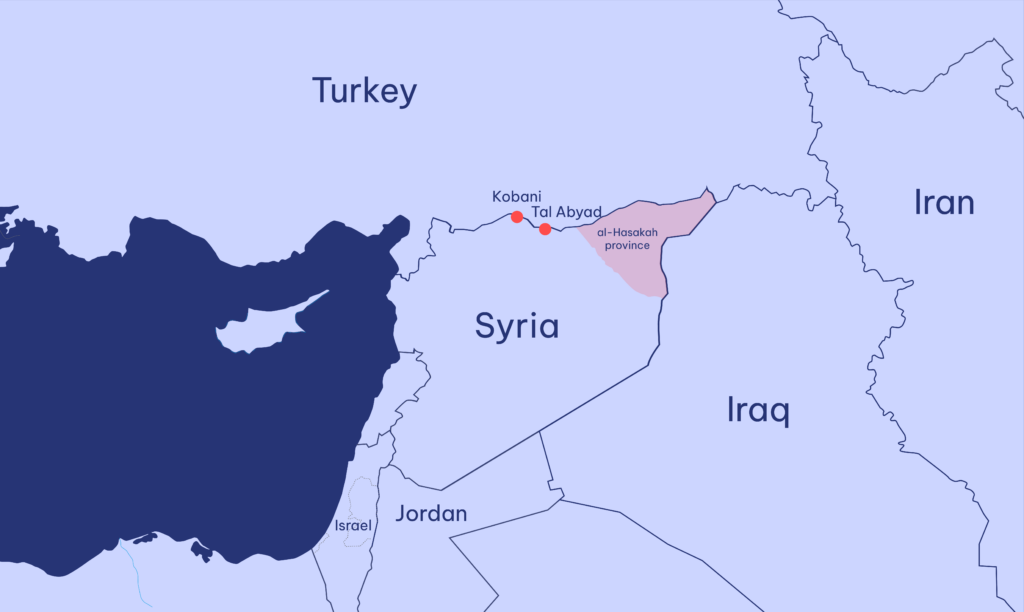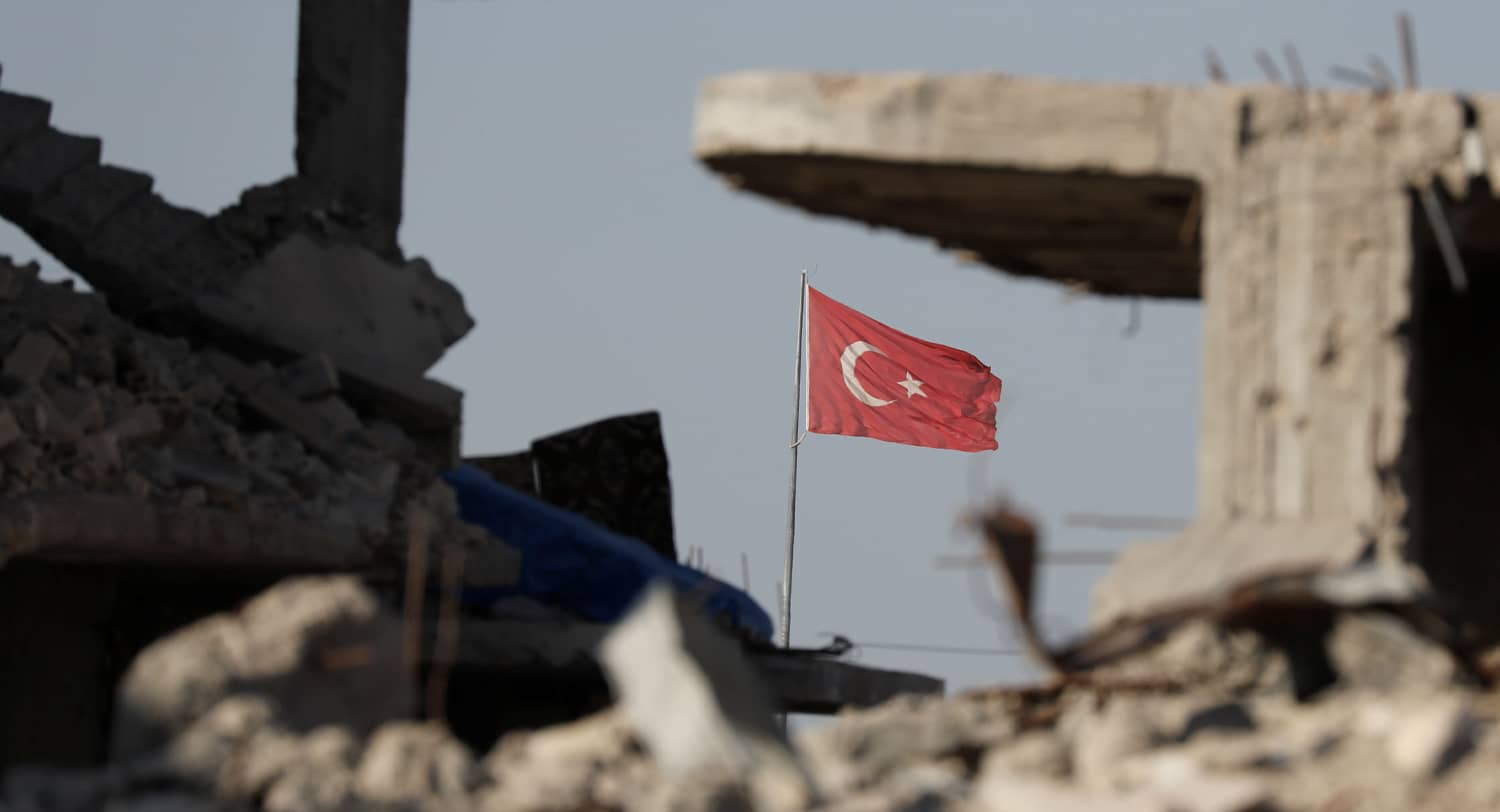2015 marked a change in the Syria policy of Turkey’s President Recep Tayyip Erdoğan. He began to walk back his initial goal of toppling the Asad regime and turned towards Syria’s surging Kurdish forces. Specifically, he wanted to prevent the emergence of a Kurdish-controlled enclave along Turkey’s border with Syria that could affect Turkey’s own Kurdish population.
A look back explains the shift. In September 2014, the Islamic State (ISIS) laid siege to Kobani, a Kurdish-majority town on the Syrian side of the border. Riots erupted in ethnic Kurdish communities in Turkey as the government appeared unwilling to help Kobani’s residents. Erdoğan’s initial position was explicit: Ankara would not support military operations in Syria against ISIS that were unrelated to Turkish support of anti-Asad resistance forces.
Kobani marked the beginning of a change in Turkish policy. Observing that the West, particularly the United States, was backing Kurdish forces, Erdoğan saw a domestic threat. The Kurdistan Workers’ Party (PKK) is a designated terrorist organization in Turkey (also in the US). But the main Kurdish force fighting ISIS in Syria, the People’s Defense Units (YPG), shares the ideology of the PKK and is heavily influenced by PKK founder Abdullah Ocalan.
Erdoğan urged the US not to intervene on behalf of the Syrian Kurds, saying, “I told Mr. Obama, ‘Do not drop those bombs. You will be making a mistake.” Erdoğan also opposed any arrangement in Syria resembling the autonomous region of Iraqi Kurdistan. On January 26, 2015, he reiterated to reporters: “What is this? Northern Iraq? Now, they want Northern Syria to be born. We can’t accept this. Such entities will cause great problems in the future.”
Kurdish success in Kobani encouraged the YPG to press into other ISIS-held areas. In May 2015, the group launched an offensive to seize Tal Abyad, situated between the YPG-controlled enclaves of Kobani and the rest of YPG territory in al-Hasakah province. The aim was to create a contiguous territory along the Turkish-Syrian frontier as part of Rojava, the Kurdish term for northern Syria. Tal Abyad was originally a mixed town comprised of Arab, Turkmen, and Kurdish communities. Following ISIS’s takeover in 2013, the Islamic State forced the Kurdish community to leave the area.

During the Tal Abyad offensive, Erdogan reiterated that the Kurdish takeover of the area posed a direct threat to Turkey, voicing concerns about the displacement of Turkmens and Arabs. Nevertheless, he also occasionally signaled cooperation with the YPG, even allowing Salih Muslim, a leader of YPG political entity the Democratic Union Party, to hold unofficial meetings in Ankara with foreign ministry officials.
One example of YPG-Turkish coordination came in February 2015, when Turkish soldiers entered northern Syria through the Kobani crossing, accompanied by YPG militia. The Turks came to move the historic tomb of Suleyman Shah, the grandfather of the founder of the Ottoman Empire, to a safe spot in Turkey, away from the ongoing Syrian civil war. The tomb, a tiny Turkish exclave in Syria under the Treaty of Ankara of 1921, was then surrounded by ISIS fighters.
But Turkish domestic politics intervened. In June 2015, Erdoğan’s Justice and Development Party lost seats in parliamentary elections. In the weeks that followed, a wave of terrorist attacks triggered a massive security crackdown on the PKK, which in turn declared the resumption of hostilities against Turkey. Erdoğan declared it “impossible to continue a peace process with Kurdish militants.” He then called for snap elections and, in November 2015, reclaimed parliamentary seats lost just months earlier.
In October 2015, several Kurdish factions announced the formation of the Syrian Democratic Forces, an alliance whose core was the YPG (and its auxiliary, the YPJ or “women’s protection units”). Turkey denounced it as a terrorist movement, owing to PKK links. Ankara also criticized the United States, remarking: “The fight against the terrorist organization Islamic State should not be carried out with another terrorist organization.”
Erdoğan’s new Syria policy was rooted in domestic politics. Between 2013 and 2015, his stance towards the PKK had been conciliatory, coinciding with his policy of regime change in Damascus. However, the shift in public opinion evident in the June elections, and fears of an expanded Rojava on his border, forced a change. Erdoğan redirected his government towards fighting Syria’s Kurds.
Also in November 2015, the Turkish military shot down a Russian Su-24 fighter jet over its airspace. This ended up furthering the refocus of Ankara’s Syria policy away from toppling the Asad regime. As part of the reconciliation process to overcome the crisis with Russia, Erdoğan decided to work closer with Vladimir Putin.
Ultimately, Erdoğan did not succeed in weakening the Kurdish-led Syrian Democratic Forces. And the eventual fall of the Asad regime was not as a result of Turkish policy.
This is Part V of a series of reports by Sinan Ciddi and Ahmad Sharawi on Turkey’s role in Syria.

